China Media Group (CMG) presented the top 10 archaeological news stories from China in 2022 on Saturday.
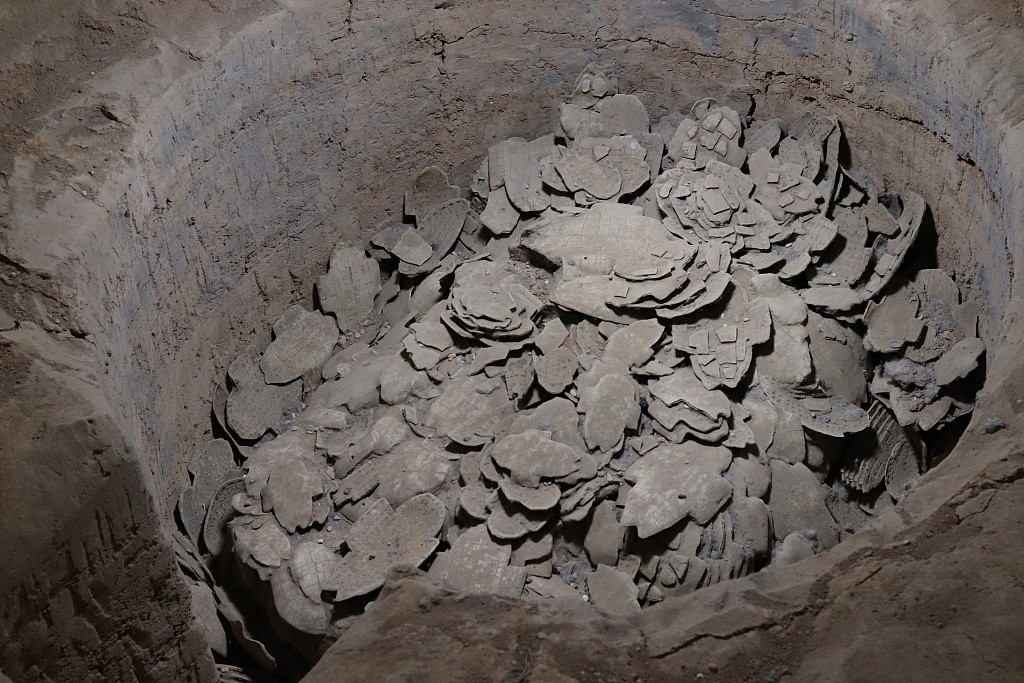
Oracle bone scripts unearthed from Yin Ruins or Yinxu, Anyang City, Henan Province, central China, September 27, 2022. /CFP
Oracle bone scripts unearthed from Yin Ruins or Yinxu, Anyang City, Henan Province, central China, September 27, 2022. /CFP
Chinese archaeologists began excavations in Yin Xu – the capital of the late Shang Dynasty (1600-1046 B.C.) – in 1928. New discoveries shed light on central China's UNESCO site, as about 150,000 pieces of oracle bone inscriptions have been found, with the number of single characters reaching more than 4,000. The contents of oracle-bone inscriptions involve various aspects of politics and life in the Shang Dynasty.
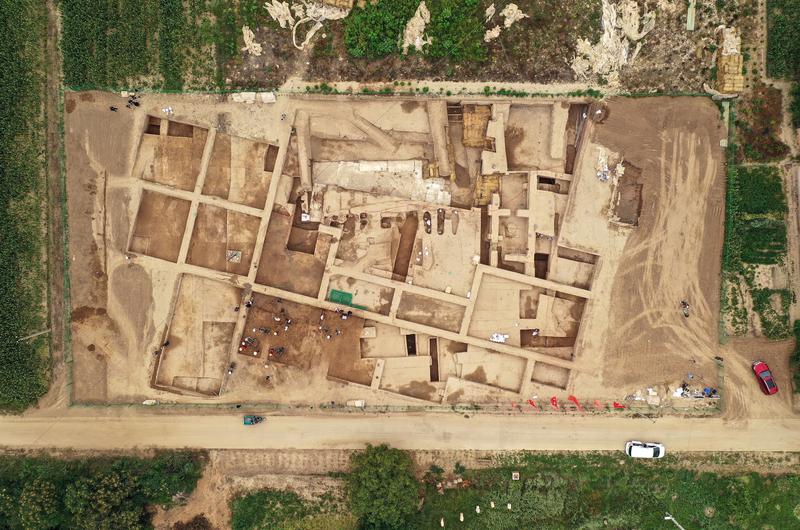
The "palace" area of the Nanzuo site in Qingyang City, Gansu Province, China. /Xinhua
The "palace" area of the Nanzuo site in Qingyang City, Gansu Province, China. /Xinhua
The Nanzuo site, located in Nanzuo Village on the Dongzhi plateau in Qingyang City, northwest China's Gansu Province, was first found in a national cultural relics survey in 1958. The latest study shows the site dates between 4,700 and 5,200 years ago. Stunning cultural relics and carbonized rice unearthed from the site are of great value in proving that Chinese civilization has a history of more than 5,000 years.
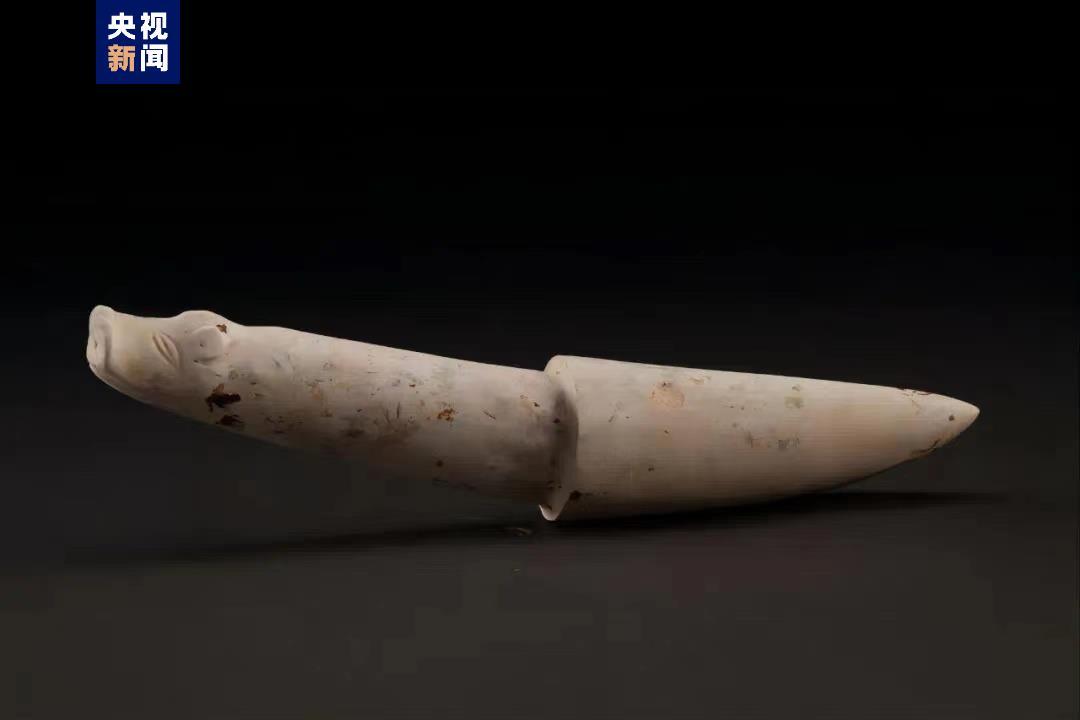
A uniquely shaped carving with the head of a dragon unearthed from the Lingjiatan relics site in Hanshan County, east China's Anhui Province. /CMG
A uniquely shaped carving with the head of a dragon unearthed from the Lingjiatan relics site in Hanshan County, east China's Anhui Province. /CMG
Located in Ma'anshan City in east China's Anhui Province, Lingjiatan is a heritage site dating back some 5,300 to 5,800 years. More than 200 relics have been unearthed from the site since 2020, including the biggest stone Yue (a stone axe used as a production tool) and Huang (an arc-shaped jade artifact) of the Neolithic Age in China. The study of the ancient Chinese etiquette system was greatly aided by the discovery of a carving with the head of a dragon in 2022, one of the recently discovered jade artifacts.
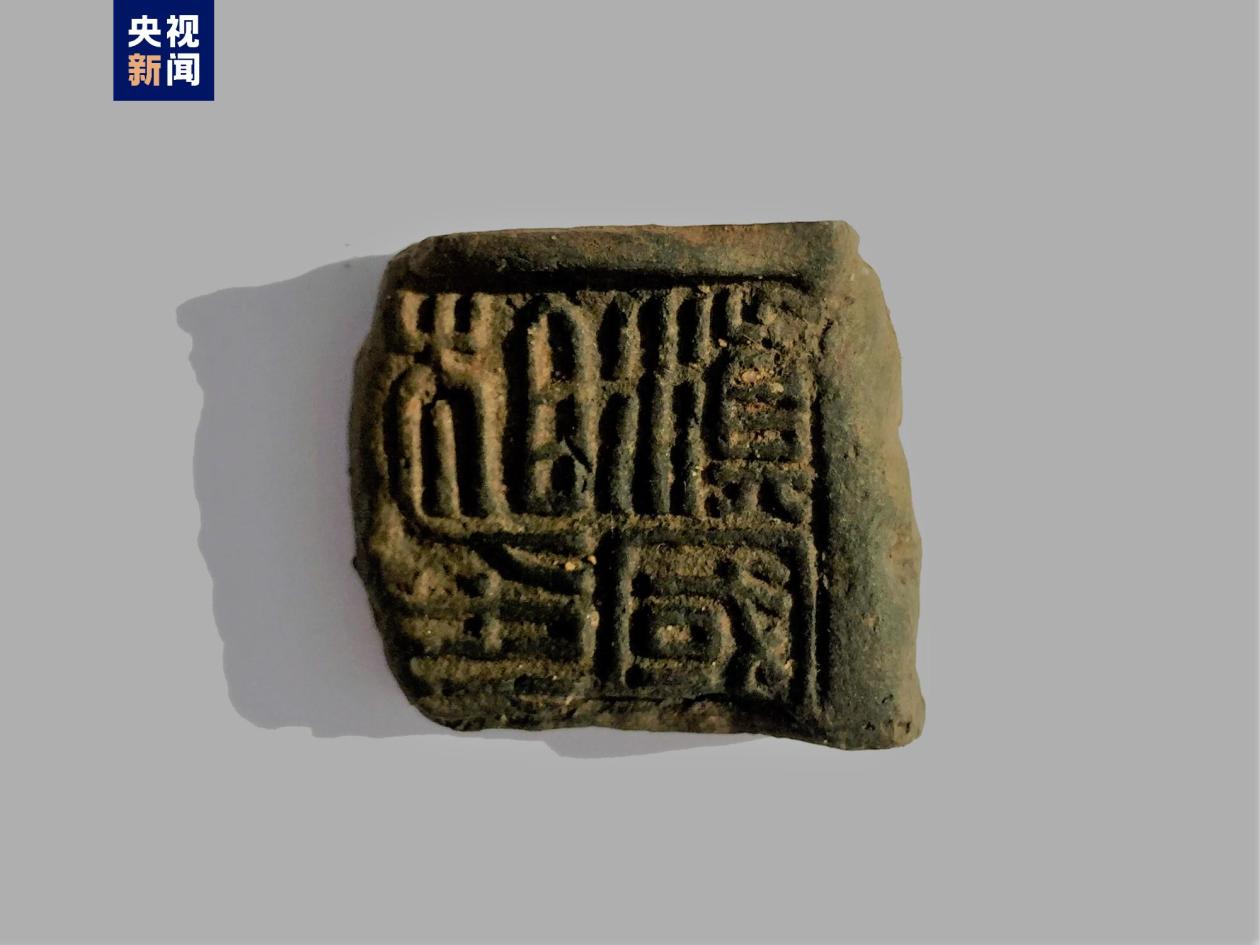
Sealing clay unearthed from the Hebosuo relics site. /CMG
Sealing clay unearthed from the Hebosuo relics site. /CMG
Archaeologists discovered the Hebosuo relics site, believed to be the living quarters of the ancient Dian Kingdom in southwest China's Yunnan Province, in September this year, and unearthed building ruins and items proving the practical administration of the region by the Western Han Dynasty (206 B.C.-AD 24). Some 800 sealing clays (stamped clay used on confidential documents in ancient times) and 800 bamboo and wooden slips were brought to light, which preserved the identity of local officials and scripts at that time.
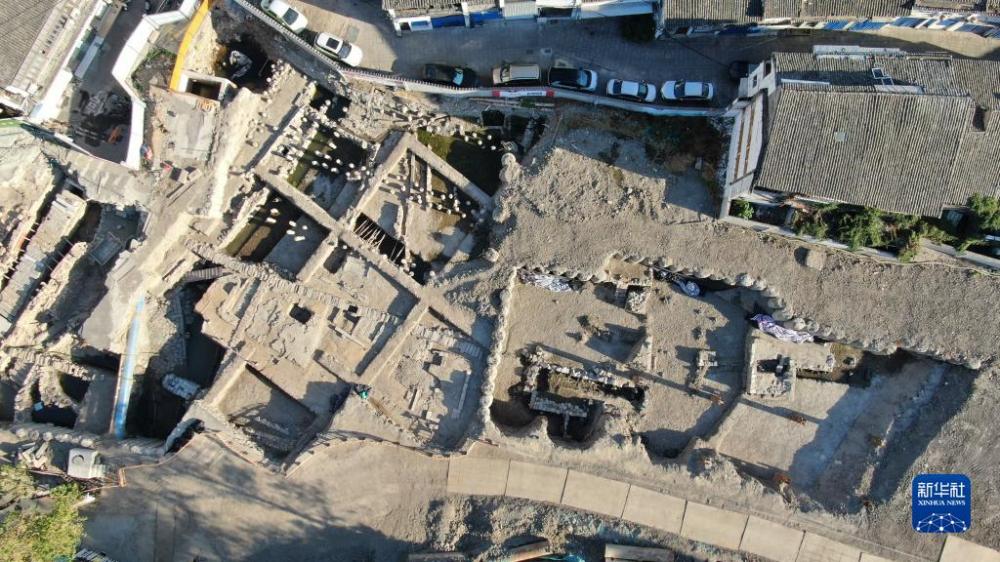
The ruins of an ancient dock at the archaeological site of Shuomen ancient port in Wenzhou City, east China's Zhejiang Province, October 10, 2022. /Xinhua
The ruins of an ancient dock at the archaeological site of Shuomen ancient port in Wenzhou City, east China's Zhejiang Province, October 10, 2022. /Xinhua
The Shuomen ancient port site in east China's Zhejiang Province was first discovered in 2021. The latest archaeology findings show the site consisted of "Wengcheng" (a small town built outside the city gate), the water gates, and wharves, along with some sunken ships, porcelain pieces, and lacquerware unearthed. The archaeological discoveries proved the significant role Wenzhou had been playing in China's maritime trade during the Song and Yuan Dynasties.
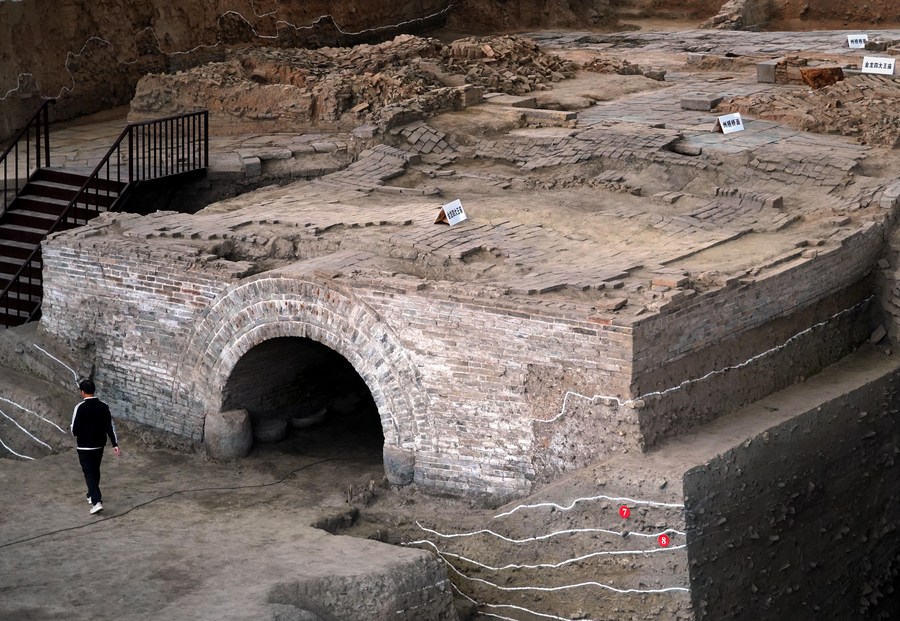
Zhouqiao relics site in Kaifeng City, central China's Henan Province, September 21, 2022. /Xinhua
Zhouqiao relics site in Kaifeng City, central China's Henan Province, September 21, 2022. /Xinhua
Archaeological excavation of the Zhouqiao site was launched in 2018. So far, a total of 4,400 square meters of the site has been excavated, and 117 sites of remains and relics have been found. Two stone murals from the Northern Song Dynasty (960-1127) have been unearthed from the site, which is the largest of their kind ever found in the country, an important discovery that demonstrates China's ancient civilization.
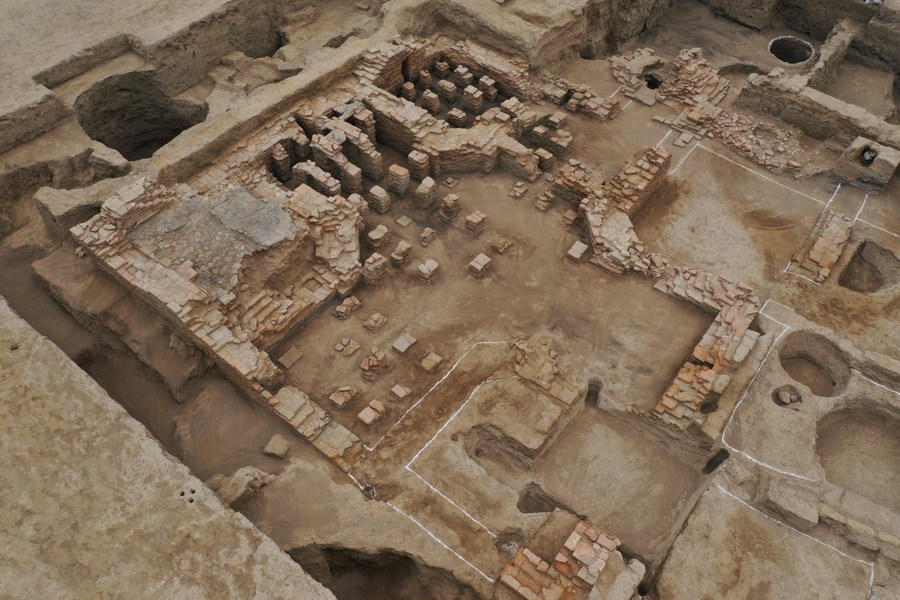
The Tangchaodun ancient city ruins in Qitai County, Hui Autonomous Prefecture of Changji, northwest China's Xinjiang Uygur Autonomous Region. /Xinhua
The Tangchaodun ancient city ruins in Qitai County, Hui Autonomous Prefecture of Changji, northwest China's Xinjiang Uygur Autonomous Region. /Xinhua
The Tangchaodun, or Tang Dynasty (618-907) mound of ancient city ruins in Qitai County, located in Hui Autonomous Prefecture of Changji, northwest China's Xinjiang Uygur Autonomous Region. The latest archaeological discoveries show a variety of sites, wall paintings, and the remains of various scripts, including Chinese, Old Uyghur, and Syriac, which testifies to the historical fact that multiple religions coexist and multiple cultures intermingle in this region.
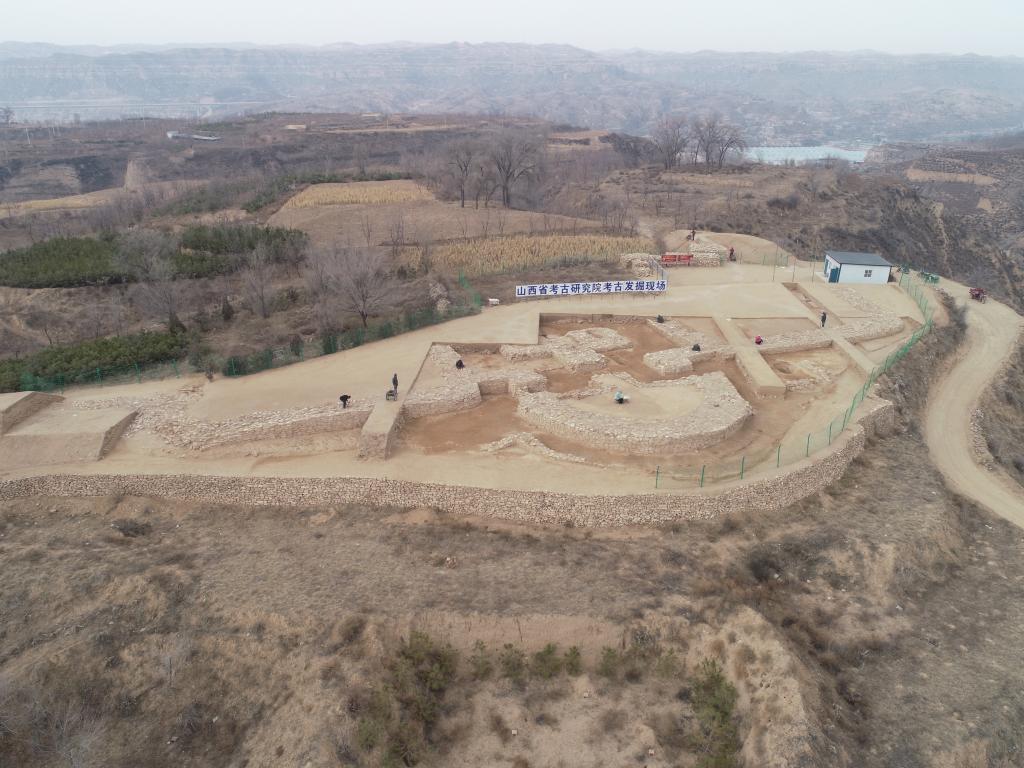
The Bicun site in Xingxian County of Lyuliang, Shanxi Province, China. /Xinhua
The Bicun site in Xingxian County of Lyuliang, Shanxi Province, China. /Xinhua
The site of Bicun, a huge stone city settlement of the Longshan Period also dating back to around 4,000 years ago, is located in the north of Bicun Village, Xingxian County of Lyuliang, Shanxi Province, where the Yellow River and its tributary Weifen River meet. The archaeological work at Bicun Site illustrates the magnificent scale and construction of the fortification facilities at its East City Gate site. It is the best-preserved and tightly structured of its kind ever found in China.
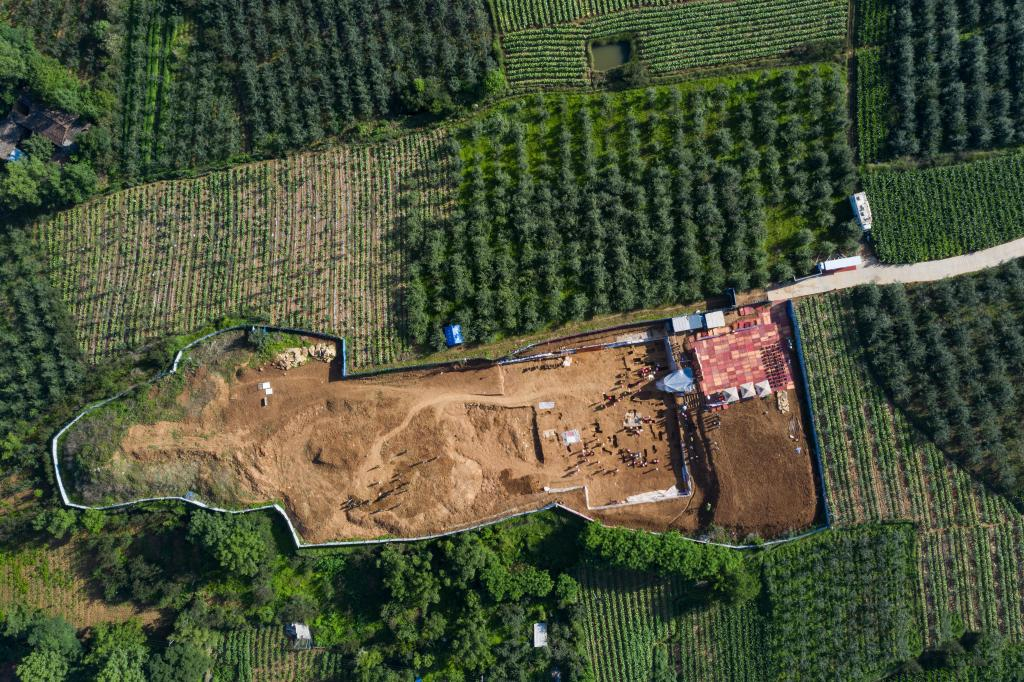
The Laolongtou Tomb site in Yanyuan County, southwest China's Sichuan Province, June 19, 2022. /Xinhua
The Laolongtou Tomb site in Yanyuan County, southwest China's Sichuan Province, June 19, 2022. /Xinhua
Archaeologists have found more than 1,100 tombs dating back to the late Shang Dynasty and the early Western Han Dynasty (202 B.C.-AD 25) at Laolongtou Tomb site in Yanyuan County, southwest China's Sichuan Province. Unearthed more than 5,500 relics, the excavation provides evidence for the exchanges among ethnic groups in southwestern China and enriches the commonality of Chinese history and culture.
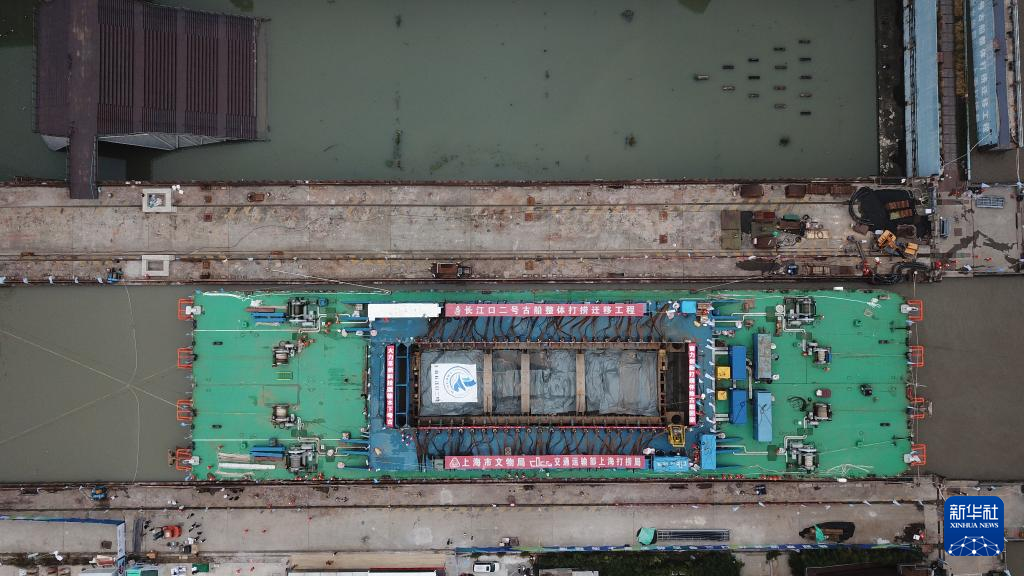
The Yangtze No. 2 Ancient Shipwreck is transferred to a dock near the Huangpu River in Shanghai, East China, November 25, 2022. /Xinhua
The Yangtze No. 2 Ancient Shipwreck is transferred to a dock near the Huangpu River in Shanghai, East China, November 25, 2022. /Xinhua
The Yangtze No. 2 Ancient Shipwreck dates back to the reign of Emperor Tongzhi of the Qing Dynasty (1644-1911). It is one of the largest and best-preserved wooden shipwrecks discovered underwater in China to date and was lifted out of waters in Shanghai back in November. According to archaeological investigations, the ship is about 38.1 meters long and 9.9 meters wide. It has 31 cabins and is loaded with exquisite cultural relics such as porcelain made in Jingdezhen, a world-famous "porcelain capital" in east China's Jiangxi Province.